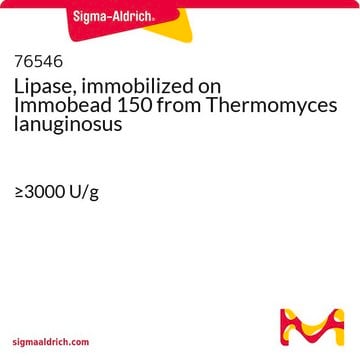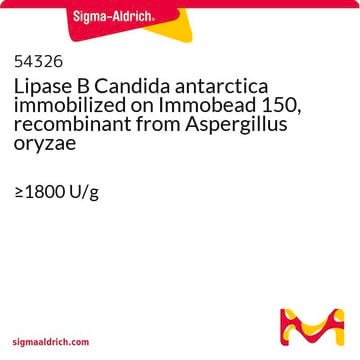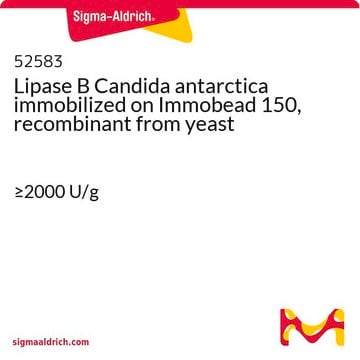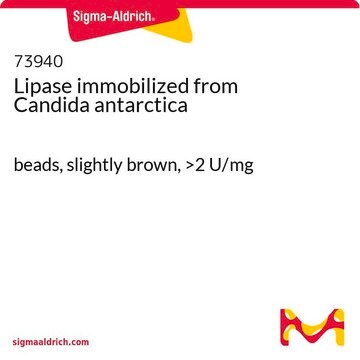54327
Lipase, immobilized on Immobead 150 from Pseudomonas cepacia
≥900 U/g
Synonyme(s) :
Immobilized Lipase
About This Item
Produits recommandés
Source biologique
bacterial (Pseudomonas cepacia)
Forme
powder (or beads)
Activité spécifique
≥900 U/g
Couleur
white to off-white
Application(s)
life science and biopharma
Température de stockage
2-8°C
Informations sur le gène
Burkholderia spp. ... BURCE16_RS29975(56665765)
Catégories apparentées
Description générale
Lipases are water-soluble, ester hydrolases. Long aliphatic chain acyl esters of cholesterol (cholesteryl esters), triacyl esters of glycerol (triacylglycerols), acyl esters of long chain alcohols (wax esters), diacyl esters of glycerol (diacylglycerols), and monoacyl esters of glycerol, are some of the common substrates for lipases.
Application
Actions biochimiques/physiologiques
Définition de l'unité
Code de la classe de stockage
11 - Combustible Solids
Classe de danger pour l'eau (WGK)
WGK 3
Point d'éclair (°F)
Not applicable
Point d'éclair (°C)
Not applicable
Équipement de protection individuelle
Eyeshields, Gloves, type N95 (US)
Certificats d'analyse (COA)
Recherchez un Certificats d'analyse (COA) en saisissant le numéro de lot du produit. Les numéros de lot figurent sur l'étiquette du produit après les mots "Lot" ou "Batch".
Déjà en possession de ce produit ?
Retrouvez la documentation relative aux produits que vous avez récemment achetés dans la Bibliothèque de documents.
Les clients ont également consulté
Notre équipe de scientifiques dispose d'une expérience dans tous les secteurs de la recherche, notamment en sciences de la vie, science des matériaux, synthèse chimique, chromatographie, analyse et dans de nombreux autres domaines..
Contacter notre Service technique











